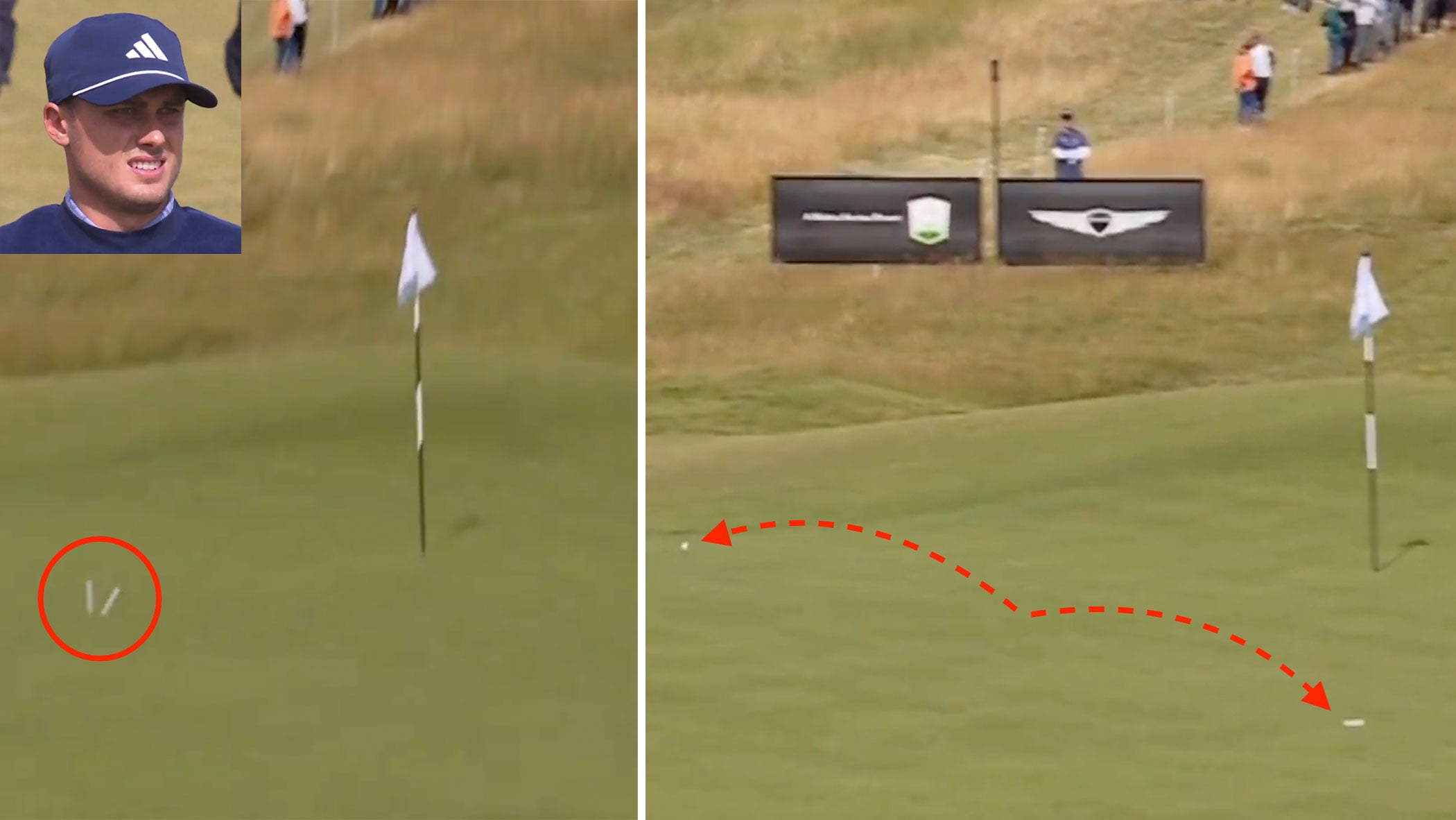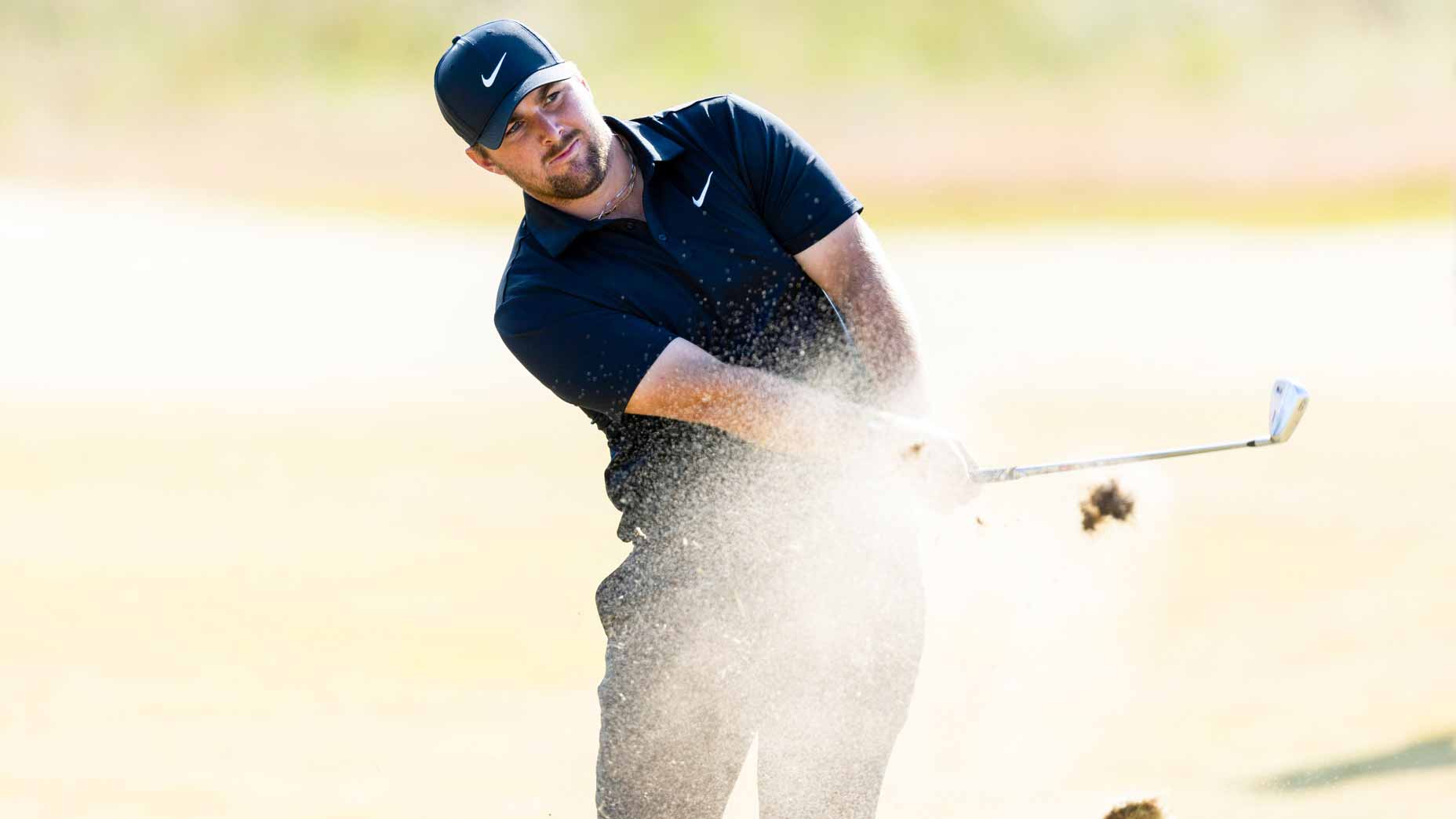Ludvig Aberg was rolling in the first round of the Genesis Scottish Open: two under through seven holes and two birdies in his last two holes. His good form continued on the tee at the 448-yard par-4 8th from where he found the right side of the fairway, leaving himself just 148 yards to a front-right pin on a blind green. One of Aberg’s playing partners, Collin Morikawa, already had played, knocking a nifty approach to 11 feet right of the hole. Aberg must have liked Morikawa’s result, because the young Swede launched a short iron that followed a markedly similar line to Morikawa’s.
Well, not markedly — exactly.
As Aberg’s ball descended to the green, it landed squarely on top of Morikawa’s ball, a space that occupied all of 1.68 inches.
“Oh, you don’t see that very often,” a commentor said on the Sky Sports broadcast. “That’s got to be 1 in 10,000.”
A Ryder Cup playing captain? Rory McIlroy wants none of itBy: Sean Zak
Actually, the odds are probably much slimmer than that. Figure in a full field PGA Tour event there are roughly 150 players hitting approaches or tee shots, over the course of four rounds, into 72 greens. That’s more than 10,000 shots right there, and this is not an occurrence we see at every event. Whatever the odds, we can agree they are long!
Ask Aberg, who after his six-under opening 64 said of the wackiness at the 8th: “I’ve never seen it before. Probably not going to see it for a long time again.”
Nor would he want to see it again, because the result was costly. After careening into Morikawa’s ball, Aberg’s Titleist kicked hard right and off the green, leaving him a short-sided chip. Aberg looked on from the fairway, confounded. “I thought I hit a decent shot, and we just saw the ball just go straight sideways,” he said later. “I didn’t really know what it did, but then we kind of realized that’s pretty much where Collin’s ball was and then I saw his ball go that way.”
That way was off the back of the green, though Morikawa’s ball’s new resting point was moot, because under Rule 11.1, Morikawa was permitted to replace his ball as close as possible to its original spot. Aberg? No such luck. Play it as lies, pal.
How unlucky is that? 🤯
— Golf Channel (@GolfChannel) July 11, 2024
Ludvig Aberg catches a terrible break after his ball lands on his playing partner's and ricochets off the green. #GenesisScottishOpen pic.twitter.com/jS3kXHsoyO
What would have been roughly a 10-footer for birdie was now a 47-foot up-and-down attempt to save par. Aberg’s chip came up well short and the par save wasn’t to be. He settled for a bogey 5.
To his credit, Aberg took the wicked stroke of bad luck in stride. “Once those things happen, I can’t do anything about it,” he said. “All I try to do is just make good swings, and I did.”
Lots of them. After parring the par-3 9th, Aberg played the back nine in five-under 30 to climb into a tie for third, two back of Justin Thomas’ lead.
For what it’s worth, not all ball collisions end in calamity. Witness the final round of the 2016 Masters, when Louis Oosthuizen stepped onto the tee at the par-3 16th and hit an ideal shot that caught the slope in the middle of the green that funnels balls down to the hole. As Oosthuizen’s ball picked up speed, it banged into his playing partner’s, which was at rest about three feet right of the cup. At first it looked as if the interaction might have knocked Oosthuizen’s ball off line, but, in fact, it had bumped it onto an even better track. A few rolls later and Oosthuizen’s ball dropped into the hole for one of the most remarkable aces you will ever see.











